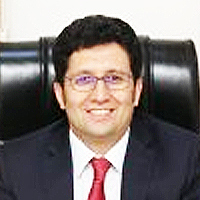Magnets, Gradients, and RF Coils of MR Scanners
Published on: 25th July, 2023
The topic of this paper is the parts of modern MR devices, which contain magnet coils. MR scanner magnets are made of four types of electromagnetic coils: 1) Main magnet, made of superconducting material. The main magnet of an MR (Magnetic Resonance Imaging) scanner creates a strong and uniform magnetic field around the patient being scanned. This magnetic field is typically in the range of 0.5 to 3 Tesla and is used to align the magnetic moments of the hydrogen atoms in the patient's body. The superconductors, which create the main magnetic field, should be cooled with liquid helium and liquid nitrogen. The main magnets made of superconductors should use a cryostat, with cooling vessels with liquid helium and liquid nitrogen, thermal insulation, and other protective elements of the magnet system. 2) The gradient magnetic field is made of three types of coils: x-coils, y-coils, and z-coils. The X coil, made of resistive material, creates a variable magnetic field, horizontally, from left to right, across the scanning tube; 3) The Y coil creates a variable magnetic field, vertically, from bottom to top; 4) The Z coil creates a variable magnetic field, longitudinally, from head to toe, inside the scanning tube. RF coils are used to generate RF pulses to excite the hydrogen protons (spins) in the patient's body and detect the signals emitted by the protons when they return to their equilibrium state after the RF excitation is turned off. The resulting interaction between the magnetic field and the aligned hydrogen atoms produces a signal that is used to generate the images seen in an MRI scan. The main magnetic field is what allows MR imaging to produce detailed anatomical and functional information non-invasively. The structure of the MR scanner magnet is complex. The resonant frequency changes at each point of the field in a controlled manner. Inside the copper core are embedded the windings of the main magnet made of superconducting material in the form of microfibers. A non-linear gradient field is created by coils of conductive material. It adds to the main magnetic field. Thus the resulting magnetic field is obtained. The types of magnets that exist in the basic configurations of MR scanners are analyzed. Scanners in the form of a closed cylindrical cavity generate their magnetic fields by passing current through a solenoid, which is maintained at the temperature of a superconductor. Exclusively used superconductors are niobium-titanium (NbTi), niobium-tin (Nb3Sn), vanadium-gallium (V3Ga), and magnesium-diboride (MgB2). Only magnesium diboride is a high-temperature superconductor, with a critical temperature Tc = 390K. The three remaining superconductors are low temperatures. New high-temperature superconductors have been discovered, as well as superconductors at room temperature. Newly discovered superconducting materials are not used in MR scanners.
















